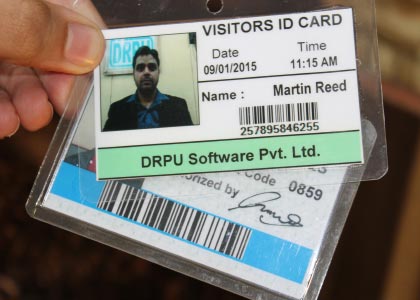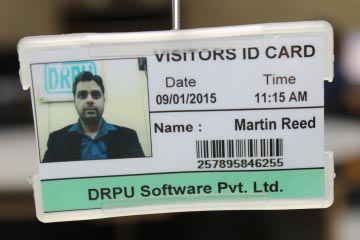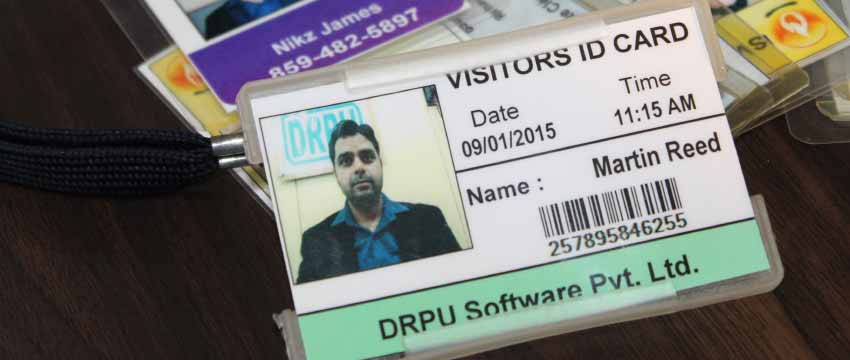Best Practices for Managing Visitor ID Cards
Managing visitor ID cards is an essential aspect of maintaining security and controlling access within an organization or facility. Here are some best practices for effectively managing visitor ID cards:
-
Design and Printing:
Create a well-designed ID card template that includes necessary information such as the visitor's name, photo, purpose of visit, date of entry, and expiration date.
Use a high-quality printer and durable cardstock to ensure the visitor ID cards are legible, professional-looking, and long-lasting.
Consider using advanced security features like holograms, UV printing, or barcode encoding to prevent counterfeiting.
-
Visitor Registration Process:
Establish a standardized visitor registration process that collects essential information from visitors, including their full name, contact details, and purpose of visit.
Implement an electronic visitor management system that allows for efficient registration, data collection, and ID card printing.
Ensure that visitors provide valid identification documents, such as a driver's license or passport, to verify their identity.
-
Temporary Access:
Clearly indicate the expiration date on the visitor ID cards, limiting access to a specific time period.
Implement a system that automatically deactivates ID cards after the designated time to prevent unauthorized access.
Consider color-coding or using distinctive visual indicators to differentiate visitor ID cards from regular employee cards.
-
Access Control:
Clearly define the areas or zones that visitors are allowed to access within the facility.
Use access control systems, such as electronic locks or turnstiles, to restrict entry to authorized areas.
Train security personnel to verify visitor ID cards and ensure compliance with access restrictions.
-
Visitor Badge Visibility:
Require visitors to wear their ID cards visibly at all times within the facility.
Designate specific badge holders or lanyards for visitors to ensure easy identification.
Encourage employees to report any individuals without visible ID cards to maintain a vigilant security culture.
-
Secure ID Card Storage:
Establish a secure location for storing visitor ID cards when they are not in use.
Implement a system to track the issuance and return of ID cards to prevent loss or theft.
Regularly audit and reconcile the inventory of visitor ID cards to identify any discrepancies.
-
Data Privacy and Compliance:
Develop a clear policy on data privacy and ensure compliance with relevant regulations, such as the General Data Protection Regulation (GDPR).
Safeguard visitor data by implementing appropriate security measures, including encryption and access controls.
Establish data retention policies and procedures to ensure the timely deletion of visitor information in accordance with legal requirements.
-
Regular Reviews and Updates:
Periodically review and update the visitor ID card management processes to address any identified weaknesses or changing security needs.
Seek feedback from security personnel, employees, and visitors to identify areas for improvement.
Stay informed about emerging technologies and solutions that can enhance the security and efficiency of visitor ID card management.
Handling of Lost or Stolen Visitor ID Cards
When a visitor ID card is lost or stolen, it is crucial to take immediate action to prevent unauthorized access and mitigate potential security risks. Here is a step-by-step guide on how to handle lost or stolen visitor ID cards:

-
Report the Incident:
Instruct the visitor or the employee who becomes aware of the lost or stolen ID card to report the incident immediately to the designated authority or security personnel.
Establish clear reporting procedures, including contact information and a designated point of contact, to ensure a prompt response.
-
Deactivate the ID Card:
Once notified, deactivate the lost or stolen ID card in the visitor management system or access control system. This step prevents the unauthorized use of the card to gain access to the facility or sensitive areas.
If the ID card is equipped with electronic access capabilities, disable or remove the associated access privileges.
-
Investigate the Incident:
Conduct an internal investigation to determine the circumstances surrounding the loss or theft of the ID card.
Review surveillance footage, interview relevant individuals, and gather any available evidence to understand how the incident occurred.
Identify potential security vulnerabilities or procedural gaps that contributed to the loss or theft and take steps to address them.
-
Notify Security and Management:
Inform the security team and relevant management personnel about the lost or stolen ID card incident.
Provide them with all relevant details, including the visitor's name, ID card number or unique identifier, and any additional information that may assist in identifying the card or potential risks associated with it.
-
Communicate with External Parties:
If the visitor ID card was used for external access control systems, such as parking facilities or off-site areas, notify the respective authorities or organizations responsible for those areas.
Share the necessary information to ensure that appropriate actions are taken to mitigate the risk of unauthorized access or misuse.
-
Reissue a Replacement ID Card:
Issue a replacement ID card to the visitor, ensuring that proper identity verification procedures are followed.
Assign a new ID card number or unique identifier to differentiate it from the lost or stolen card.
Communicate any changes or updates in access privileges, expiration dates, or restrictions to the visitor and update the records accordingly.
-
Review Security Protocols:
Evaluate existing security protocols and procedures related to visitor ID card management.
Identify areas for improvement, such as enhanced verification processes, stricter access controls, or increased security measures, to prevent similar incidents in the future.
Consider implementing additional security measures, such as biometric authentication or stricter ID card retrieval procedures, depending on the level of security required.
-
Educate Employees and Visitors:
Reinforce the importance of promptly reporting lost or stolen ID cards to all employees and visitors.
Conduct awareness campaigns or training sessions to educate individuals on the potential risks associated with lost or stolen ID cards and the proper procedures for handling such incidents.
By following these steps, organizations can effectively handle lost or stolen visitor ID cards, mitigate security risks, and maintain control over access to their facilities.

